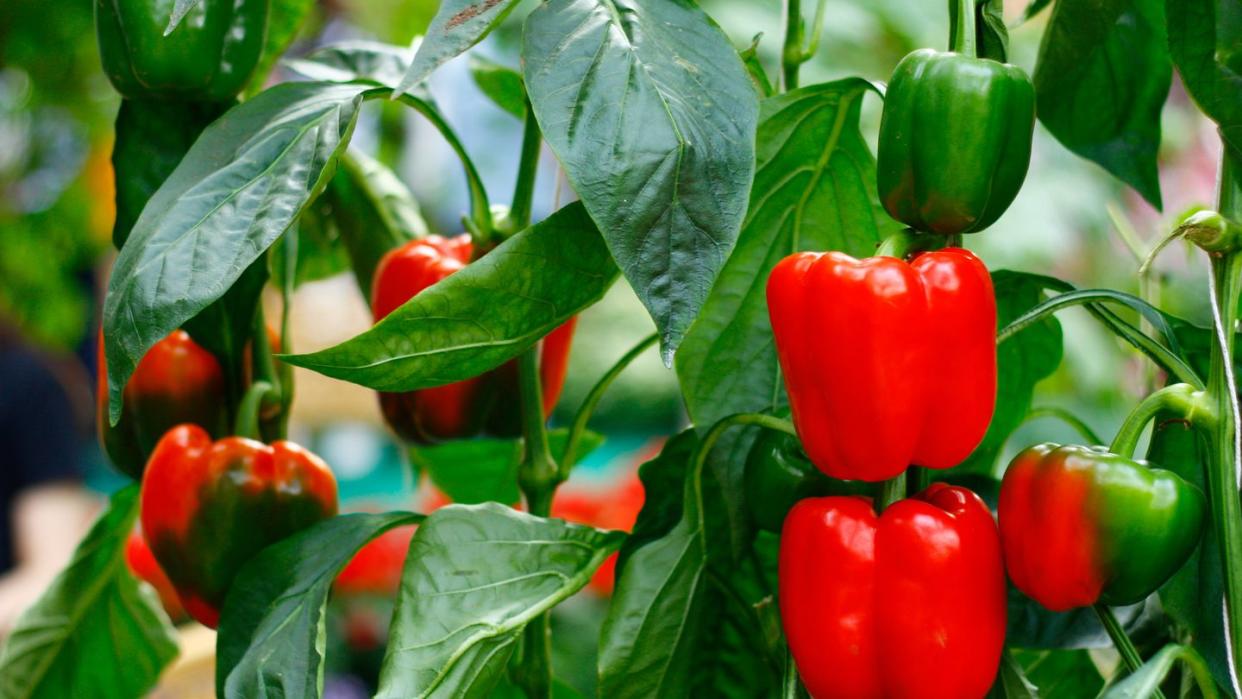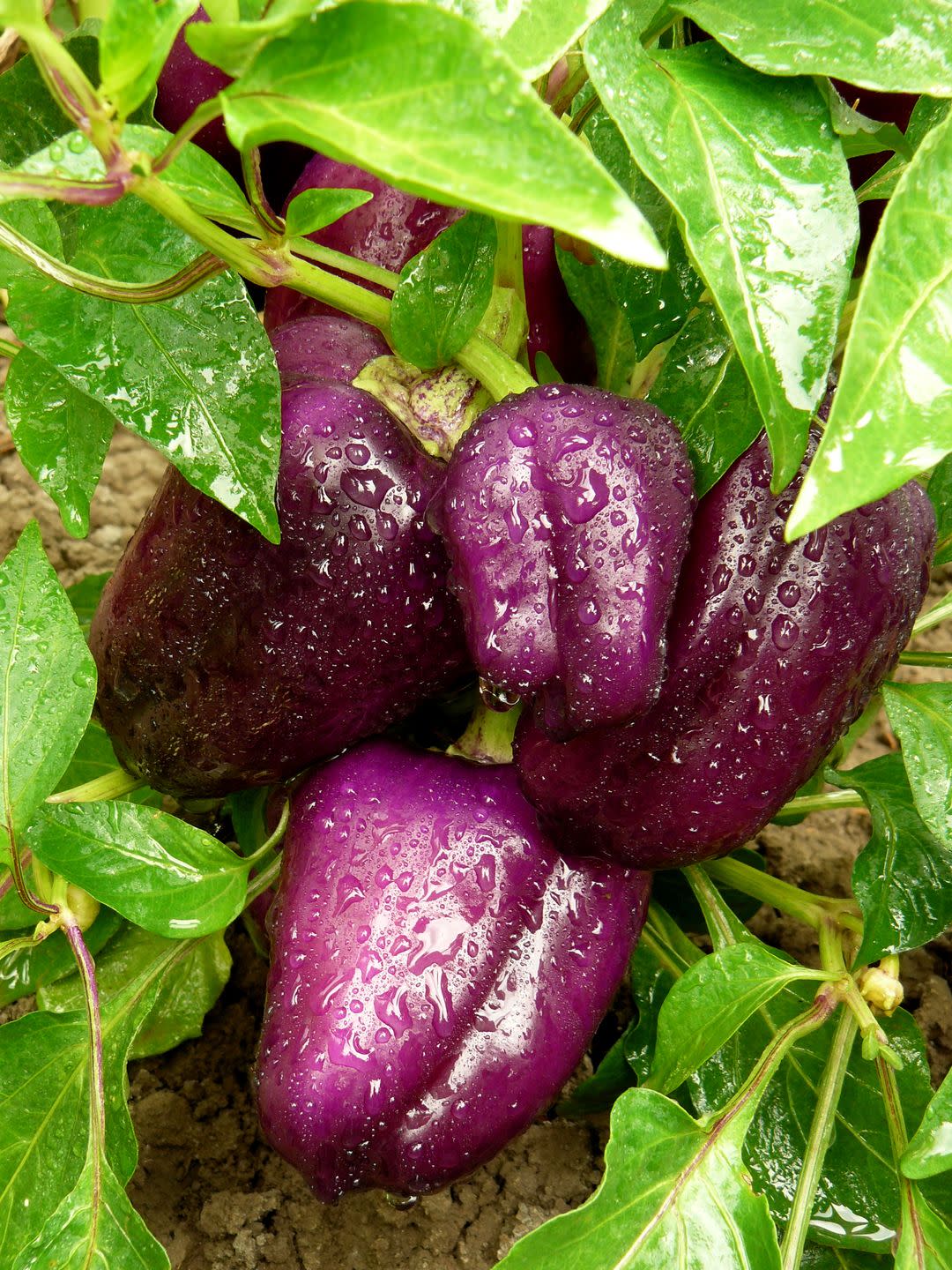Here’s How to Grow Crunchy, Sweet Bell Peppers at Home

"Hearst Magazines and Yahoo may earn commission or revenue on some items through these links."
Whether they're stuffed, dipped in ranch, or stir-fried, there's nothing quite like the refreshing crunch of a bell pepper! While this veggie adds deliciousness to so many recipes, true pepper enthusiasts savor it best in its raw form, without any frills. To elevate that first crunch feeling, why not try growing your own bell peppers in your vegetable garden this spring?
Although bell peppers may require a bit more attention than other vegetables, the effort is undoubtedly rewarding! To kickstart the pepper-growing process, consider purchasing seedlings instead of starting from seeds, advises Pam Farley, a garden blogger and author. “They also love hot weather, so don’t plant them too soon when nights are still chilly or they’ll struggle,” she said.
While it's best to plant your peppers in warmer weather, sometimes circumstances can't be helped. Back in 2014, when Oklahoma experienced a late spring cold front, Ree Drummond faced this very challenge. Fortunately, her pepper plants proved resilient. "I've got lots of peppers," she shared in a blog post about her garden. “They’re a little traumatized from the weather over the past week, but again…once it gets hot, they’ll be good.”
So if you find yourself in a similar situation, don’t fret! For optimal growth, soil temperatures should be around 70 degrees, with nighttime temperatures in the 50s before planting peppers. (You can find your local soil temperature here.)
Bell peppers typically take 60 to 90 days to mature, providing ample time for them to bounce back and reach their full potential. Interestingly, green peppers are actually unripe peppers; they eventually turn red, yellow, orange, or purple when left on the vine for a few more weeks!
Ready to grow your own bell peppers? Here's what else you need to know:
How do I plant bell peppers?
Once all danger of frost has passed in your area, plant peppers in a spot with full sun, which is considered 8 hours of direct sun per day. If you live in a very hot climate, they may benefit from some afternoon shade to prevent them from getting scalded by the sun, says Farley.
Plant peppers in rows about 12 to 18 inches apart. Bell peppers also do well in containers and grow bags on your deck, patio or balcony if you’re tight on space. “Stake them with bamboo canes or tomato cages to keep them supported and off the ground,” says Farley. After planting, mulch with wood chips, straw, or compost to help conserve moisture and keep down weeds.

Should I fertilize bell peppers?
Bell peppers aren't heavy feeders, like tomatoes, but they do benefit from being fed regularly, says Farley. If you like, use a starter fertilizer when planting, then feed about once a month with a general purpose garden fertilizer. Or use granular extended release food, too, if you don’t want to have to remember when you fed your plants. Follow the package instructions, and don’t overdo it; too much nitrogen (the first number on the package) will cause plants to push lots of new foliage but no flowers or fruit.
How do I water bell peppers?
This is probably the most important tip: Bell peppers need consistent moisture and deep watering, or they may develop blossom end rot, which results in mushy spots and black lesions on the fruit, says Farley. Moderate, even watering is ideal.
Another option to deliver just the right amount of steady moisture is to plant peppers in a self-watering container that has a reservoir you fill every few days; this allows the plants to take up exactly what they need for strong growth.
How do I stop bugs from eating my bell peppers?
Like any outdoor plant, bell peppers are not exempt from pests and diseases! Spider mites and aphids are common pests that affect peppers, especially those grown in protected environments. Spider mites, which can be identified by the fine webs they create on the underside of leaves, thrive in hot, dry conditions. To combat them, regularly mist-spray the affected areas at the first sign of an infestation to create inhospitable conditions for the mites.
Aphids, on the other hand, also prefer the undersides of leaves but can be found on other parts of the plant. Signs of aphids can range from misshapen, yellow leaves and distorted flowers or fruit to sticky “honeydew”-like excrement. For isolated clusters of aphids, simply squish them. For more severe infestations, move the plants away from other peppers, turn them upside down, and brush or blast the aphids off with a hose.
When can I harvest bell peppers?
You can harvest a few weeks after the fruits form when your peppers are green; they’ll have a crisp texture and somewhat bitter taste. But with another week or two on the plant, peppers will turn yellow, red or orange (or whatever the variety's mature color) and have a sweeter taste. Use a knife or pruning shears to snip the peppers because the plants can break if you try to pull the fruit off. “Frequent picking also encourages more production,” says Farley.
Once harvested, bell peppers can be used in Ree's fajitas, salads, or grilled sausage and peppers.
You Might Also Like
